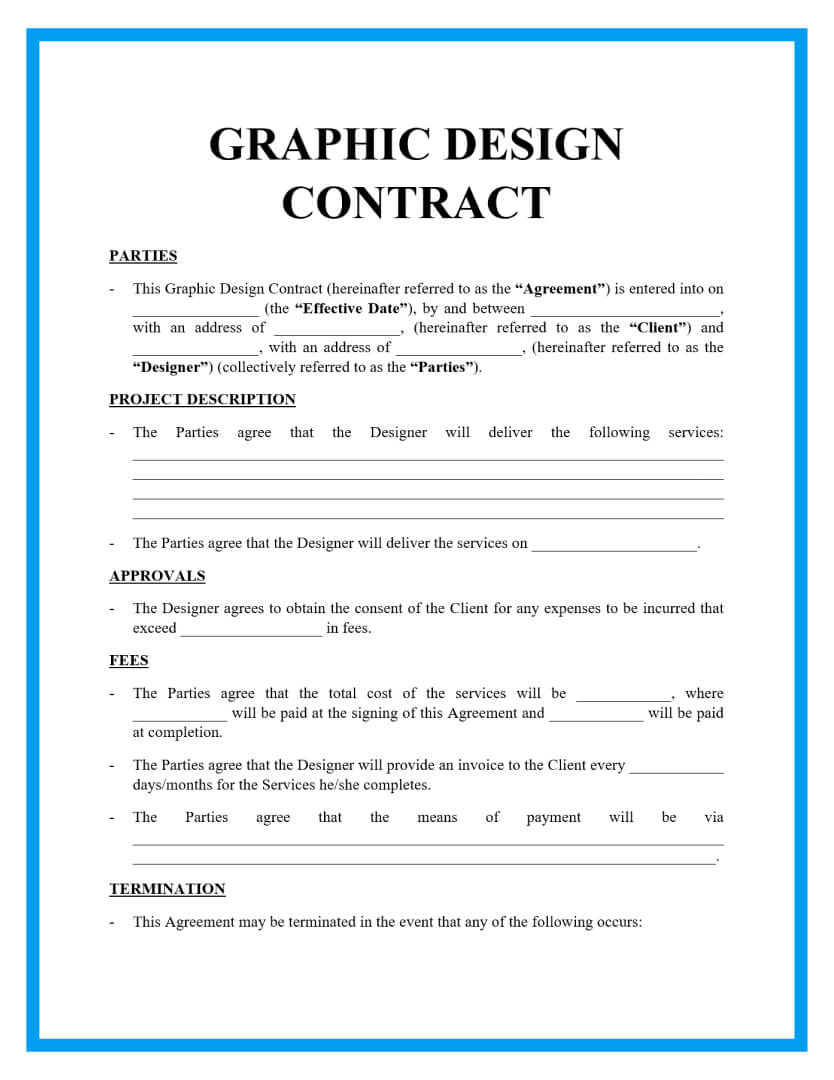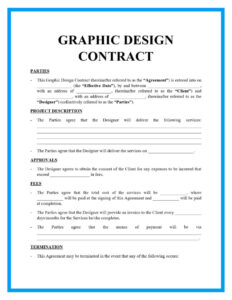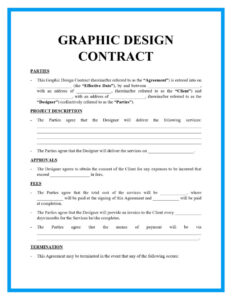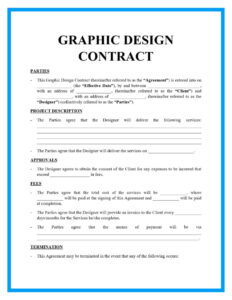Stepping into the world of graphic design, whether you are a seasoned freelancer or just starting your journey, is exciting and full of creative potential. However, the path isn’t always smooth. Many designers have experienced the frustration of projects that grow beyond their initial scope, payment delays, or misunderstandings about deliverables. These common challenges can quickly turn a dream project into a stressful ordeal, impacting your passion and your bottom line.
This is where a solid contract becomes your best friend. It’s not just a formal piece of paper; it’s a clear roadmap for both you and your client, ensuring everyone is on the same page from start to finish. Having a reliable graphic design client contract template is absolutely crucial for protecting your interests, clarifying expectations, and fostering professional, long-lasting client relationships that allow your creativity to truly shine.

Why Every Graphic Designer Needs a Solid Contract
In the fast-paced and often subjective world of creative work, relying solely on verbal agreements or casual emails can be a recipe for disaster. A contract provides a legally binding framework that outlines every detail of the project, leaving no room for ambiguity. This isn’t about distrusting your clients; it’s about building a foundation of mutual understanding and respect that benefits everyone involved. Think of it as your professional safety net, allowing you to focus on the design work you love without constant worry.
Without a well-defined contract, you expose yourself to common pitfalls like scope creep, where project requirements expand without corresponding changes in pay or timeline. You might also encounter disputes over ownership of design files, late payments, or clients disappearing without fulfilling their end of the bargain. These issues not only drain your energy but can also severely impact your financial stability and reputation as a designer. A contract helps prevent these situations by setting clear boundaries and consequences.
A robust graphic design client contract template acts as a mutual agreement that protects both parties equally. It ensures that the client understands what they are receiving, when they will receive it, and how much it will cost. Simultaneously, it protects you by defining your responsibilities, payment terms, and what happens if the project deviates from the original plan. This transparency builds trust and establishes a professional working relationship right from the outset, paving the way for smoother project execution.
Key Elements Your Graphic Design Contract Must Include
When you are putting together or customizing your contract, several key sections are non-negotiable. These elements form the backbone of any effective agreement, addressing potential areas of conflict and ensuring clarity for all parties. Overlooking any of these critical components can leave significant gaps in your protection.
- Project Scope and Deliverables: Clearly define what you will create, including the specific designs, file types, and number of concepts.
- Payment Schedule and Terms: Outline the total project fee, payment milestones, due dates, accepted payment methods, and what happens in case of late payment.
- Revision Policy: Specify the number of revisions included in the project price and the cost for additional rounds of changes.
- Confidentiality: Include a clause that protects sensitive information shared by either party during the project.
- Intellectual Property Rights: Detail who owns the final designs and any initial concepts, as well as usage rights for portfolio purposes.
- Termination Clause: Explain the conditions under which either party can end the agreement and any associated penalties or refunds.
- Timeline and Milestones: Provide a detailed project schedule with key dates for drafts, revisions, and final delivery.
By meticulously including these sections in your graphic design client contract template, you are not just ticking boxes; you are actively preventing future headaches. Each clause serves a purpose in safeguarding your time, your finances, and your creative output. This level of detail not only minimizes misunderstandings but also demonstrates your professionalism and commitment to a structured and fair working process, fostering stronger relationships and ensuring more successful project outcomes for everyone involved.
Customizing Your Graphic Design Client Contract Template for Success
While a solid graphic design client contract template provides an excellent starting point, it’s rarely a one-size-fits-all solution. Every client and every project brings unique requirements and nuances. Therefore, successful designers understand the importance of tailoring their contracts to fit the specific details of each engagement. This customization ensures that the agreement accurately reflects the scope, deliverables, and expectations for that particular job, making it more relevant and effective.
Think about the variety of projects you might undertake: a quick logo design for a startup will have different needs than a comprehensive branding package for an established corporation, or an ongoing social media graphics retainer. Each of these scenarios demands different clauses for revisions, timelines, payment structures, and intellectual property. Taking the time to adjust your template to these specifics shows your client that you are attentive to their individual needs and dedicated to providing a clear framework for their project.
Even with a thoroughly customized template, seeking legal advice can be an invaluable step, especially for larger projects or when dealing with clients in different jurisdictions. A legal professional can review your contract, ensuring it complies with local laws and provides robust protection for your specific business model. While a template is an excellent foundation, a lawyer’s insights can refine it into an ironclad document, giving you ultimate peace of mind.
Presenting your customized contract to clients is also an art form. It should be professional, clear, and easy to understand, not a intimidating legal document filled with jargon. Walk your client through the key sections, answer any questions they might have, and explain the benefits of each clause for both parties. This open communication builds trust and ensures they feel comfortable and confident in signing the agreement.
Embracing a robust and thoughtfully customized contract is one of the smartest business decisions any graphic designer can make. It transforms potential conflict into clear understanding, allowing you to focus your energy on what you do best: creating stunning designs. This proactive approach not only protects your business but also elevates your professional standing, ensuring smoother projects and more satisfied clients in the long run.
By taking the time to prepare and personalize your agreements, you are investing in the stability and growth of your design career. This commitment to clear, professional boundaries ultimately leads to less stress, more creative freedom, and a stronger foundation for all your future endeavors.



